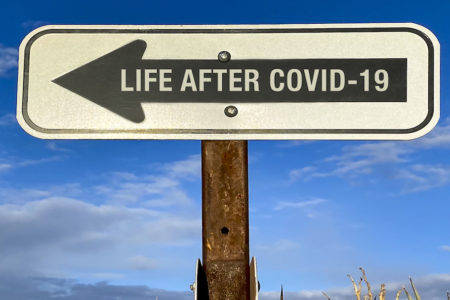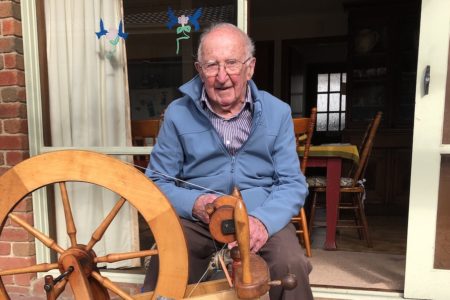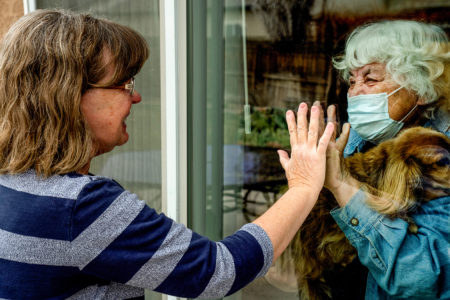As part of our on-going series, we speak with Rev Sandy Brodine, of the Banyule Network of Uniting Churches.
Can you outline what has been done and is in the works for conducting dispersed worship and other church activities?
We are providing worship in a couple of ways; email and livestreaming on Facebook. With email, people are receiving a simple written “liturgy” and a written sermon. There are also links to a Vimeo recording of a sermon and some songs we recorded with the Common Ground Community in the Heidelberg Scots Church before shutdown.
We are also providing two services via livestream on Facebook. The Thursday night SPACE Contemplative Service and a Sunday 10am service for all nine of our congregations and communities (including our two Messy Churches, the Contemplative Community and the Intergenerational Sunday Community.)
The Sunday Morning Service is a very simple liturgy with interactive prayers of Thanksgiving (modelling a prayer practice of gratitude) and interactive Prayers of the People. This worked extremely well with people of all ages. My ‘co-liturgist’ is my eight-year-old daughter, Sophia, and my husband, Rev Brendan Byrne from Heathmont Uniting.
Over the past few months we’ve found lots of ways to get more people involved in the livestream, including making a video about “where I find hope at Easter” with input from across the Network, some video recordings of various households singing worship songs, and now a Banyule Network “choir” recording from many houses across the church! People of every age, from the smallest children to the oldest members have been involved in music, readings, praying, providing images which has really helped maintain a sense of community.
We are providing Lenten Studies, “Coffee Catch-ups” and some essential meetings via Zoom. One of the study groups has continued and is providing a wonderful deep opportunity to share our prayer lives and faith with one another from our homes.
The “Banyule Network Theology Hub” continues to study theology with an online connection to Pilgrim Theological College via Zoom. It has been great to have Geoff Thompson join us for some theological wrestling, too!
We are rolling out a Pastoral Care system called “Tele Contact” and “Tele Connect” as a way to ensure pastoral care, particularly for the many older members of our congregations who are unable to engage via email or other media.
Are there any lessons, ideas or advice (including what hasn’t worked) that might be useful to share?
If you are going to livestream, do it from home, not church, to model safe practices. Create an “atmosphere of a worship space” by setting up the space around you so people watching can feel worshipful. Again this models ways people can worship at home. We have kept it very simple.
An advantage of a Facebook Livestream service is that a number of people who do not attend worship regularly joined us last week and joined in the prayers. It was also the first time we’ve ever managed to get people from all of our worshipping communities together in the one “Worshipping Space”. We are sending home materials and explanations of creative activities for the livestream service ahead of time this week so that families can collect materials and then join in by posting photos of what they all are doing at home.
We had some fairly significant sound issues at the beginning, but we have now bought an omnidirectional mic and I have learned to use OBS software to curate the pre-prepared content provided by others – readers, group singing, etc.
Zoom works beautifully for small group catch ups – “after church zoom coffee” and Lenten Study Groups. It is great for praying for one another, too. It provides a good sense of interactivity. Zoom requires good moderation – someone needs to be the “host” and that person needs to mute any noisy rooms – and if there are many people, perhaps bring them in one at a time by muting and unmuting. The UCA card system for meetings is excellent for monitoring traffic in zoom meetings!
In the past three weeks we’ve learned how to do “choir videos” with a pre-recorded track and people across the Network singing and playing instruments and sending them in. One of our musicians, John Rowe, and I have learned how to use DaVinci Resolve to make reasonably good “choir videos” which people are loving! It’s a great learning challenge which we’ve had fun doing together – although it is really pushing our computer hard drives past the brink!
What are some of the things you think you would like to preserve about church life and what are the most challenging aspects?
We most want to maintain the pastoral connections with our communities so that every person is connected and feels supported during this time. That is a very big team effort in a network of churches as big as ours. We also see this as an opportunity for members of all of our communities to worship together for the first time, and perhaps even to deepen their own experience of the “Holy Habit” of prayer, which we’ve been focusing on in the Lenten Study. It has been wonderful to have a couple of groups continue on with this growing and deepening their faith and prayer lives well past Easter.
Is there a short message of faith or encouragement you might like to share?
Keep it simple. Keep what you’re doing at a level that is appropriate for the people you are serving to be able to access. Keep in contact with one another! Keep an eye out for the awesome resources that are being curated by the eLM unit for other congregations to use. We have amazingly talented folk in the UCA and there is a wealth of good resources to share. Take some time to play and try new things! It’s a great opportunity for learning.
If there’s one thing I hope comes out of this horrible circumstance being foisted on the planet, I wish for more connectedness, more creativity and different and more engaged ways of joining together as a church community with the God who breathed us all into being!
Stay safe in your little coracles, church friends!





